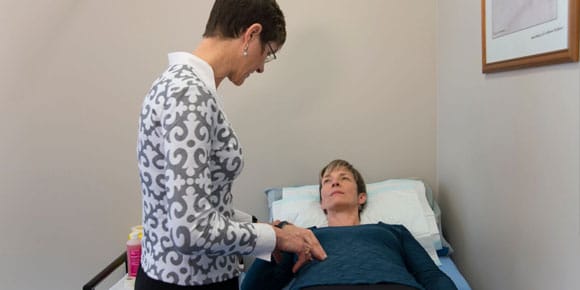What are polyps?
Polyps are small abnormal tissue growths. They can look just like a bump or like a mushroom with a stalk. Polyps occur most commonly in the colon, but can also grow the ear, nasal cavity, cervix, uterus and bladder.
Up to 50% of adults have colon polyps. Most colon polyps are benign, but some types of polyps can become cancerous over time. It takes approximately 10 years for a polyp to develop into a cancer.
What are the symptoms of colon polyps?
Generally, polyps don’t cause noticeable symptoms. Sometimes if they are large they can result in bleeding or mucous discharge from the anus.

What causes colon polyps?
Getting older appears to be the biggest factor in developing colon polyps.
Polyps are very common in people living in Western countries, which suggests that diet and environment play a role. For example, risk factors include:
- a low-fibre diet
- a red meat/high fat diet
- smoking
- obesity.
Polyps and colon cancer tend to run in families, suggesting there may be a genetic link.
How are polyps diagnosed?
Polyps are usually detected during a colonoscopy checking for colon cancer. This may be done after a positive faecal occult blood test.
Using a colonoscope, a polyp specialist can see the surface of the whole colon. A polyp appears as a lump that protrudes into the inside of the colon. Polyps may look the same as normal tissue or show signs of ulceration and bleeding.
Polyps may also be found with a Gastrografin enema X-ray or CT scan.
How are polyps treated?
Polyps are usually removed when they are found on colonoscopy. This eliminates the chance for that polyp to become cancerous.
Polypectomy
The medical term for removing polyps is polypectomy. Most polypectomies are done through a colonoscope. Small polyps are ‘snipped off’. Larger polyps are removed by placing a noose around the polyp base and burning through it with electric cautery.
Polyp removal is not painful. The lining of the colon does not have pain receptors. You are also given a sedative before the colonoscopy to prevent discomfort caused by stretching of the colon.
Rarely, a polyp will be too large to remove during colonoscopy. A surgical procedure will be needed at a later time.
Follow up
After polyps are removed, repeat colonoscopy is recommended 3–5 years after the initial colonoscopy. The time interval depends on several factors such as:
- the type of polyp
- the number and size of polyps
- ability to see the whole colon during colonoscopy (e.g. sometimes stool may still be present after bowel prep).
Undergoing screening (and re-screening) for colon cancer greatly reduces the chance you will die from colon cancer.
